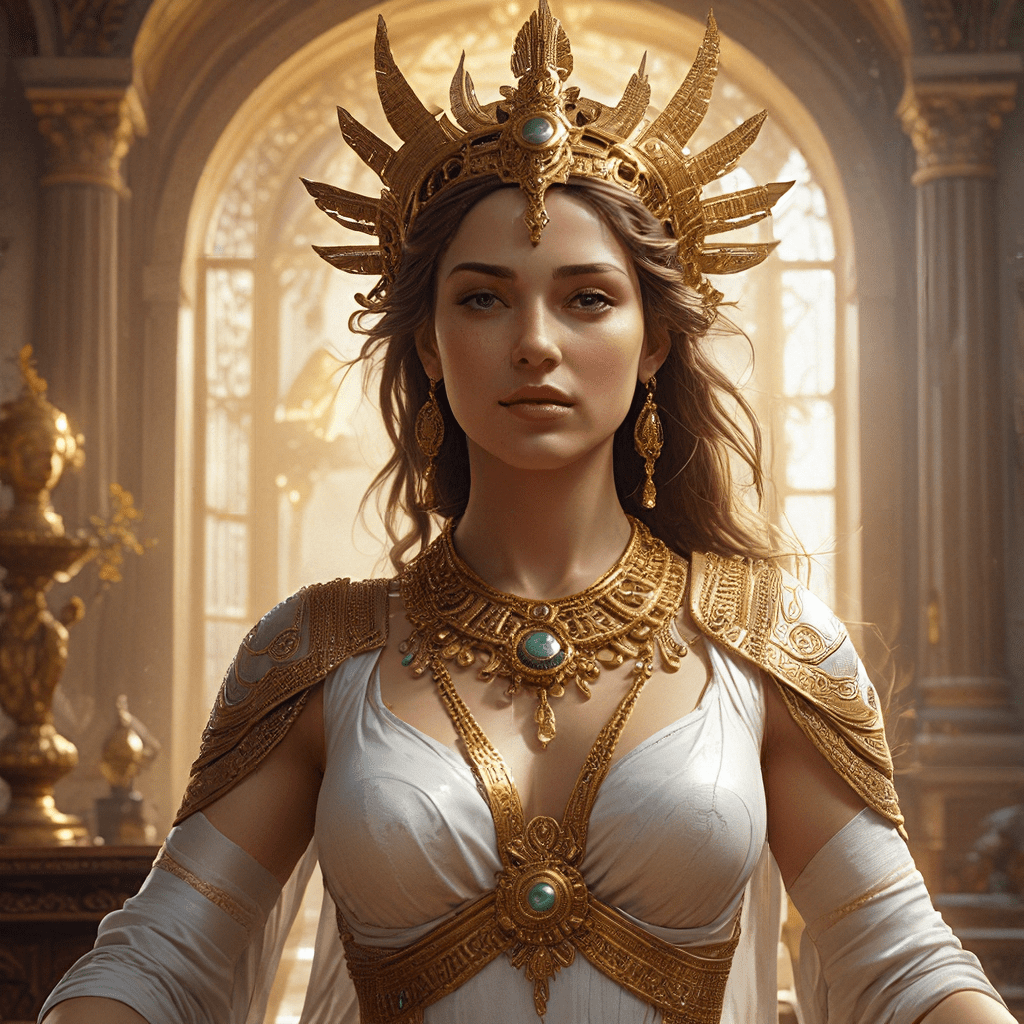Bast: The Goddess of the Home
1. Introduction: The Divine Feline
In the rich tapestry of Egyptian mythology, Bast emerges as a prominent and beloved goddess, deeply intertwined with the lives of the ancient Egyptians. Revered as the embodiment of domesticity, femininity, and feline grace, Bast’s influence extended far beyond the walls of homes, permeating the realms of music, dance, and even warfare.
A defining characteristic of Bast is her inseparable association with cats, animals held in high esteem by the Egyptians. Their agility, independence, and hunting prowess were seen as reflections of the goddess’s own attributes. Cats in ancient Egypt were not merely pets; they were revered as sacred beings, believed to possess mystical powers and act as guardians against evil spirits.
2. Bast’s Origins and Evolution
The origins of Bast as a deity can be traced back to the pre-dynastic period of ancient Egypt, where feline deities were already worshipped. Over time, she evolved from a local goddess associated with the city of Bubastis to a prominent figure in the Egyptian pantheon.
As Bast’s influence grew, her role expanded to encompass protection, fertility, and even warfare. During the New Kingdom period, she was often depicted with a lioness’s head, reflecting her connection to the fierce warrior goddess Sekhmet. This dual nature, embracing both feminine grace and fierce protection, solidified Bast’s place as a multifaceted and powerful deity.
3. The Domestic Sphere: Bast’s Domain
At the heart of Bast’s domain lies the home, a space she fiercely guarded as the protector of family, children, and domestic harmony. The ancient Egyptians believed that Bast’s presence brought good fortune and ward off evil spirits. Her image was often placed in homes to ensure the safety and well-being of its inhabitants.
Bast was particularly revered for her protection of children. She was often depicted nursing kittens, symbolizing her nurturing qualities and role as a mother goddess. Her gentle touch was believed to shield children from harm and ensure their healthy growth.
4. Fertility and Motherhood
Bast’s association with fertility is deeply intertwined with her role as a mother goddess. She was believed to empower women with the ability to conceive and give birth, ensuring the continuation of life. Her feline nature, with its ability to reproduce prolifically, reinforced this connection to fertility.
In ancient Egypt, women sought Bast’s blessings during pregnancy and childbirth, hoping for safe deliveries and healthy children. Her image was often worn as amulets for protection and invoked in rituals to promote fertility and ease childbirth.
5. Music, Dance, and Joy
Beyond her domestic and protective roles, Bast was also a goddess of joy, music, and dance. Her association with these aspects of life stemmed from her playful and carefree nature, reflected in the playful antics of cats. She was believed to bring laughter, merriment, and vibrant energy to the people of ancient Egypt.
The annual festival dedicated to Bast in Bubastis was a time of joyous celebration, filled with music, dance, and revelry. People from all over Egypt flocked to the city to participate in the festivities, honoring the goddess and celebrating life.
6. The City of Bubastis: Bast’s Sacred Sanctuary
The city of Bubastis, located in the Nile Delta, was the primary center of Bast worship. It was a vibrant and bustling city, teeming with worshippers who came to pay homage to the goddess. The city’s main temple, dedicated to Bast, was home to a large number of sacred cats, symbolizing the goddess’s presence and power.
The annual festival in Bubastis was a grand celebration honoring Bast’s role as a protector, a fertility goddess, and a bringer of joy. The festival was a time of feasting, dancing, and music, reflecting the goddess’s playful and vibrant nature.
7. Bast and the Sun God Ra
Bast’s relationship with the sun god Ra, a central figure in Egyptian mythology, is a testament to her power and influence. She was often depicted as Ra’s daughter, highlighting her connection to the divine and her role as a divine protector.
Ra and Bast shared a complementary relationship, with Ra representing the life-giving power of the sun and Bast embodying the protective and nurturing aspects of femininity. Their close association underscored the interconnectedness of the Egyptian pantheon and the importance of balance in the universe.
8. Bast and the Eye of Ra
One of Bast’s most powerful symbols is the Eye of Ra, a divine entity representing both the sun god’s wrath and his protective power. As the Eye of Ra, Bast embodies a fierce and formidable aspect of the goddess, capable of inflicting punishment on those who threaten the divine order.
This association with the Eye of Ra reinforces Bast’s role as a defender, both within the domestic sphere and against external threats. It symbolizes her unwavering commitment to protecting the innocent and ensuring balance and harmony in the world.
9. Bast’s Appearance and Symbolic Attributes
Bast’s appearance is as varied as her roles, reflecting her multifaceted nature. She is often depicted in a feline form, either as a cat or a lioness, symbolizing her grace, agility, and connection to the animal world. She can also be found with a human head, representing her intelligence, wisdom, and connection to humanity.
A key symbolic attribute associated with Bast is the sistrum, a musical instrument made of metal or wood with crossbars. The sistrum’s rhythmic sound was believed to ward off evil spirits and appease the goddess. Its presence in Bast’s iconography further emphasizes her connection to music, dance, and the protection of the home.




